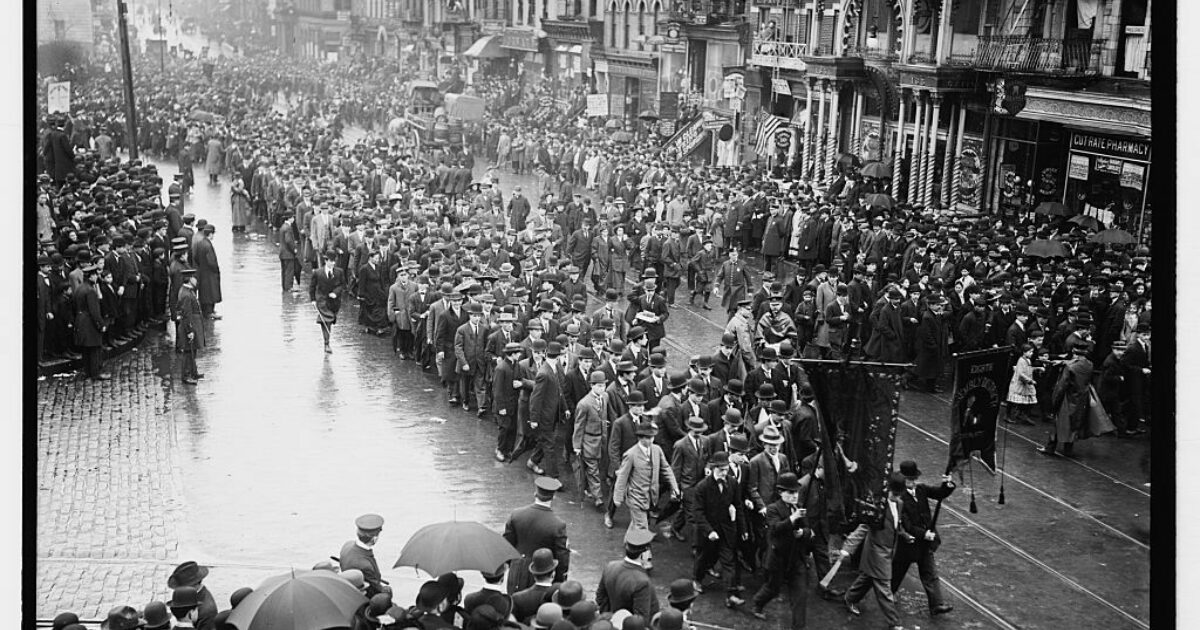
Observed the first Monday in September, Labor Day is an annual celebration of the social and economic achievements of American workers. The holiday is rooted in the late 19th century, when labor activists pushed for a federal holiday to recognize the many contributions workers have made to America’s strength, prosperity and well-being.
In 1819, one year after Illinois became a state, the legislature passed the Apprenticeship Act, protecting the rights of minors. Primarily an agricultural state in the nineteenth century’s first decades, Illinois missed the wave of labor activism that swept the East Coast in the 1820s and 1830s, but by 1861 had enough coal miners to serve as the launching point for the first national miner’s union, the American Miners’ Association formed that year in Belleville. In the early 1870s, labor founded the Workingmen’s Party and, beginning in 1877, the Knights of Labor enjoyed great success in a number of Illinois cities. As an important railroad center, Illinois played a significant role in the 1877 national rail strike and troops were sent to Chicago, Decatur, East St. Louis, Galesburg and Peoria.
Mass demonstrations marked May 1, 1886 as immigrant and native-born united in the crusade against a backdrop of literally dozens of strikes and lockouts at major and minor industrial concerns. One of the most bitter was at the McCormick Reaper factory, where on May 3 the police attacked a group of strikers killing two. That incident only inflamed simmering passions, provoking newspaper editor August Spies to publish a flyer urging workers to attend a rally the evening of May 4 in Haymarket Square, to arm themselves and seek revenge. The events that took place on May 4 became known as the “Haymarket Affair,” a violent confrontation between police and labor protesters that became a symbol of the international struggle for workers’ rights. It has been associated with May Day since that day’s designation as International Workers’ Day by the Second International in 1889.
Illinois played a central role in the Pullman Strike of 1894. Called by Eugene Debs of American Railway Union, the strike spread throughout Illinois, tying up rail traffic and in Chicago, Spring Valley and Grape Creek, leading to violent confrontations. The boycott that would tie up much of the nation’s rail traffic began on June 26, 1894, when ARU members refused to handle trains carrying Pullman cars. They agreed, however, to switch and handle trains including U.S. mail cars. In a remarkable display of worker solidarity and pent-up grievances with the nation’s railroads, which had slashed wages drastically in response to the depression, more than 124,000 rail workers joined the effort within days.
The early history of labor in Illinois laid the groundwork for workers and activists of the 20th century to obtain the rights and protections workers have today. Illinois played a key part in the founding of Labor Day. Therefore, each Labor Day, we remember the history of labor in Illinois.



